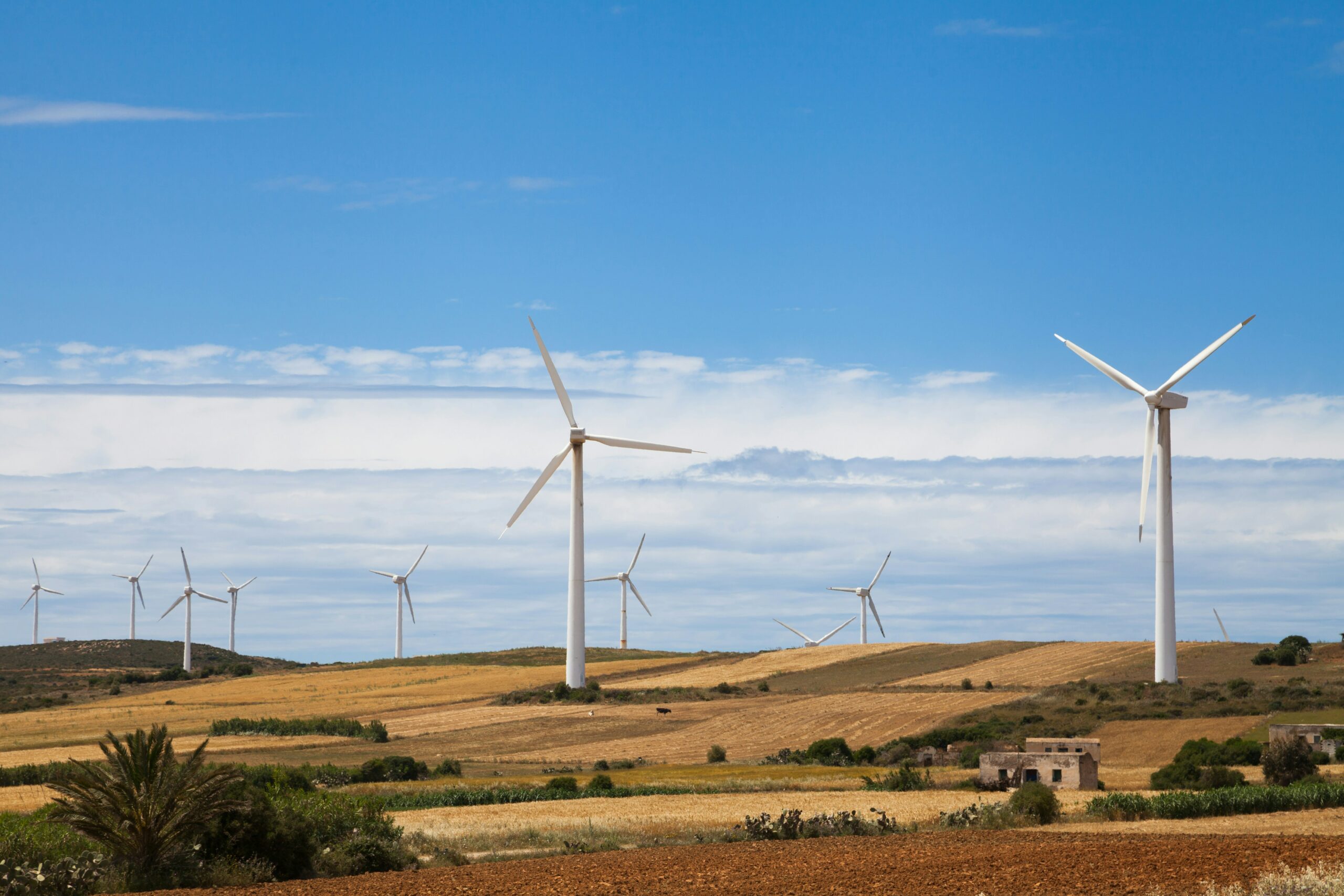Author: Dwayne Pattison
In our previous market map, we provided a high-level, and much too brief, overview of some of the technologies and companies that make up the expansive climate tech industry.
We now look to add more details and dive deeper into each of the segments of our taxonomy to provide a clearer and more nuanced understanding of all of these dynamic climate tech markets.
In what is our first of many focused market maps, we delve into Food and Agriculture (F&A), primarily highlighting the innovative startups that have made the news over the past year or so. We also strove to include examples from all over the world, with all the major regions represented – North and South America, Europe, Asia, Australia, the Middle East and Africa.

However, although we have worked on capturing more companies and activities in this market map, it is not exhaustive. We only took a small percentage of the companies in our database. If your company is not featured here, we would like to hear from you to make sure we have you on our list of companies to monitor.

Food, Agriculture and Climate Tech – Context
The F&A group is unique in many ways. Agriculture, for instance, is considered one of the hardest industries to decarbonize for several reasons. Firstly, a significant portion of agricultural emissions comes from biological processes, such as methane production by ruminant livestock and nitrous oxide emissions from soil management, which are inherently more complex to mitigate than carbon emissions from industrial processes. Secondly, the dispersed nature of agricultural activities, often spread across vast and varied landscapes, complicates the implementation of uniform, large-scale decarbonization strategies.
More immediate solutions that are available in other sectors, such as widespread electrification, fuel switching and energy efficiency improvements are not as easy to adopt or implement. Therefore, the F&A technologies will have to be more varied and more customised to match the particular challenges the industries face.
In addition, F&A are arguably the sectors most negatively impacted by climate change (such as drought, heat waves and flooding) which necessitates that companies also advance technologies related to climate adaptation, something we will focus more on in upcoming articles.
Food and Agriculture Climate Tech Taxonomy: Overview
The required technological diversity is emerging, evident in the growing list of companies in each of our F&A subsegments. Climate tech startups focus on sustainable farming practices, precision agriculture, and the reduction of greenhouse gas (GHG) emissions. Advancements in technologies such as AI-driven food and crop management, robotics, data collection and analytics, soil health monitoring, satellite imagery support the development of the industry
In our taxonomy, we have broken the relevant technologies into the following subsegments and explained in more detail below:
-
- Biotech and Genomics
- Precision Agriculture
- Alternative Foods
- Vertical and Urban Farming & Land Management
Related Segments
As we indicated in our kickoff article in October, a few of the taxonomic groupings are exclusive to one set of technologies or industries. Overlaps and grey areas are common. The following segments will be discussed in greater detail in subsequent articles but we want to highlight their relationship to F&A:
- Carbon Sequestration: Agriculture can contribute to carbon sequestration through practices like agroforestry, cover cropping, and soil management, which help in capturing and storing atmospheric CO2 in plants and soil.
- Carbon Markets: Agriculture and forestry can generate carbon credits through practices that reduce or sequester greenhouse gases, like improved land management, reforestation, or organic farming.
- Carbon Capture (BECCS): Bioenergy with Carbon Capture and Storage (BECCS) in agriculture and forestry involves growing biomass that absorb CO2, then using this biomass for energy production while capturing and storing the emitted carbon.
- Food Waste: In the context of climate tech, reducing food waste in agriculture and food systems can significantly lower GHG emissions, as decomposing food waste in landfills produces methane, a potent GHG. Startups are also addressing preventing food waste such as using biotechnology to extend the shelf-life of agricultural products and developing better refrigeration systems.
- Circular Economy: F&A fits into the circular economy by recycling waste (like organic matter and manure) back into the farming system as fertilizers, reducing the need for synthetic inputs and minimizing waste.The alternative foods industry can integrate waste products (like plant-based leftovers) into its production processes, contributing to a more circular economy and reducing overall waste and emissions.
- Fuel and Energy Production: Agriculture can produce biofuels (like ethanol from corn or biodiesel from oilseeds), offering renewable alternatives to fossil fuels and contributing to a reduction in GHG emissions. Agricultural waste (like crop residues and animal manure) can be converted into energy through processes like anaerobic digestion or combustion, providing renewable energy and reducing reliance on fossil fuels.
- Transport: Transitioning to electric or biofuel-powered transport vehicles on the farm or transporting food can reduce GHG emissions, contributing to a more sustainable and climate-friendly food production system. Logistics is also addressed here as startups are working to find better trucking and shipping routes.
- Hydrogen: Agriculture can contribute to hydrogen production through biomass gasification or biogas reforming, providing a renewable source of hydrogen fuel which can be used in various sectors including transport and energy. Food production may look to hydrogen to power manufacturing processes.
The Food and Agriculture Taxonomy: The Details
The startup market for climate technology in food and agriculture is a rapidly evolving landscape, driven by the urgent need to address climate change and ensure sustainable food production.
This market is characterized by a diverse range of innovative technologies, each aiming to reduce environmental impact, enhance efficiency, and promote sustainable practices.
Biotechnology and Genomics
Advancements in biotechnology and genomics are driving innovations in crop breeding, pest management, and disease resistance, leading to more sustainable and resilient agricultural practices.
- Biotechnology in agriculture involves using biological processes, organisms, or systems to develop products and improve plants and animals. This can include genetic engineering, molecular markers, molecular diagnostics, vaccines, and tissue culture. Biotech applications in agriculture can lead to higher crop yields, reduced environmental impact, and enhanced nutritional content of foods.
- Genomics, the study of an organism’s complete set of DNA, including all of its genes, impacts agriculture. By understanding the genetic makeup of crops and livestock, farmers and scientists can create more resilient, productive, and sustainable agricultural systems. This includes breeding programs for disease resistance, drought tolerance, and improved productivity.
Precision Agriculture
Precision agriculture (PA) employs technologies such as drones, GPS, sensors, control systems, robotics, autonomous vehicles, software and data analytics to optimize resource use, improve crop yields, and reduce environmental impacts. Applications can be found in crop and livestock production.
Technologies in this field address:
- Resource Efficiency: PA enables more efficient use of resources like water, fertilizers, and pesticides, reducing the environmental footprint of farming.
- Energy Efficiency: Advanced technologies in PA can improve energy efficiency in farming operations, reducing the reliance on fossil fuels
- Data-Driven Decisions: By leveraging data analytics and IoT technologies, PA allows for more informed decisions that can lead to reduced greenhouse gas emissions (GHGs) from farming activities.
- Soil Health Monitoring: PA can monitor soil health and composition, aiding in carbon sequestration efforts and improving soil’s ability to act as a carbon sink.
- Reduced Emissions: PA can lead to reduced emissions from farm machinery due to more efficient farming practices and optimized field operations.
- Adaptation to Climate Change: PA tools help producers adapt to climate variability, providing insights for better crop selection, planting times, and water management in changing climate conditions.
Alternative Foods and Proteins
The alternative foods industry focuses on developing sustainable and environmentally friendly alternatives to traditional animal products. It includes plant-based proteins, cultured and lab-grown meats, and fermentation-derived products. These innovations aim to meet growing protein demand with lower environmental footprints. In addition to meat, companies are also producing seafood, milk and egg alternatives.
- Reduced GHGs: Traditional livestock farming is a significant source of GHGs, particularly methane. Alternative foods, like plant-based or lab-grown meats, typically have a much lower carbon footprint.
- Sustainable Land Use: The production of alternative foods generally requires less land than traditional animal agriculture.
- Water Conservation: Alternative food sources often require less water than conventional meat production.
- Energy Efficiency: Producing alternative foods can be more energy-efficient compared to traditional animal farming, especially as technologies advance.
- Innovation in Food Production: The industry drives innovation in food production technologies, such as precision fermentation and cellular agriculture, which can lead to more sustainable and climate-friendly food systems
Vertical and Urban Farming & Land Management
Vertical and urban farming involves growing crops in vertically stacked layers or integrated in other structures such as highrises or warehouses. These systems often use controlled-environment agriculture (CEA) technology, which optimizes plant growth. Soilless farming techniques like hydroponics, aeroponics and aquaponics are a few of the more prominent technologies that create innovative ways to grow food that requires less space and less energy.
- Hydroponics is a method of growing plants without soil, using mineral nutrient solutions in an aqueous solvent. This allows for precise control over nutrients and can result in higher yields and faster growth rates.
- Aeroponics is the process of growing plants in an air or mist environment without the use of soil or an aggregate medium. This method offers efficient nutrient delivery and reduced water usage, making it ideal for urban farming setups.
- Aquaponics combines aquaculture (raising fish) with hydroponics (growing plants without soil). The waste produced by farmed fish supplies nutrients for plants grown hydroponically, which in turn purify the water.
We consider vertical and urban farms as part of land management in which less land is required to produce food. Hydroponics and vertical farming are particularly well-suited for urban environments, where traditional farming is not feasible. This adaptation is a key aspect of modern land management, which seeks to integrate sustainable practices into urban planning and development. Hydroponics and vertical farming represent highly efficient forms of land use. They require significantly less space compared to traditional farming, making them ideal for urban settings where land is scarce. And although they are designed for urban environments the same
Other technologies included in this sub-segment are:
- Greenhouses: Extend growing seasons and protect crops from adverse weather, pests, and diseases.
- Indoor Farming: Uses methods like grow lights, environmental control (temperature, humidity, light), and often hydroponic systems. It is ideal for year-round cultivation irrespective of external weather conditions.
- Smart Urban Agriculture: Leverages the Internet of Things (IoT), AI, and other digital technologies for precision farming, data-driven decision making, and automation in urban agricultural practices.
These technologies can contribute to climate change mitigation by enabling food production with a lower carbon footprint. They also often use renewable energy sources and can be integrated into green building designs, further aligning with climate-friendly land management strategies.
To stay informed about the climate industry explore our latest climate tech news.
Read also: Top 11 Climate Tech Companies in 2024
Companies on the Map
80 Acres
Aerobotics
Aerofarms
AGRIVI
AgroScout
Agrosmart
Air Protein
AKUA
Apeel Sciences
Apollo Agriculture
AppHarvest
Arkeon Biotechnologies
Asterix Foods
Augmenta
Avalo.ai
Babylon Micro-Farms
BEE Biofuel
Beyond Meat
BharatRohan
BioGreen 360
Biolets
Bisentry
BlueNalu
Bowery Farming
BrightFarms
CarbonFarm Technology
CattleEye
Cellular Agriculture
CIBO Technologies
Circa Biotech
Copia
CropX
Daring Foods
Earthshot Labs
Eat Just
Farm66
Farmers Edge
Finless Foods
Flexfarming
Futurae Farms
Future Fields
Geltor
Good Catch
Gotham Greens
Greenlight Biosciences
GreenSight Agronomic
Gro Intelligence
Hart Bioenergy
Hazel Technologies
iFarm
Impossible Foods
Infarm
Instacrops
iogen
Just Vertical
LettUs Grow
Liberation Labs
LIVIN Farms
Lori Systems
Mast Reforestation
Meatable
Monarch
Mosa Meat
Muddy Machines
Mycorena
Neruva Technologies
NEw Leaf Biofuel
New Wave Biotech
NewWave Foods Inc.
One Concern
Overstory
Phytoform Labs
Plenty
Purfresh
RapidAIM
Revoltech
Ripe Robotics
Ripple Foods
Seabex
Sensegrass
Sentera
Shiok Meats
Soil Carbon
Solar Foods
Soletrac
Source.ag
Spacefarm
Sun Bear Bioworks
SuperMeat
SwinteTech
Symbrosia
Taimba
Taranis
TheCircle
Too Good to Go
Trace Genomics
Turtle Tree
Umiami
Vultus
Ynsect
Zero Egg








